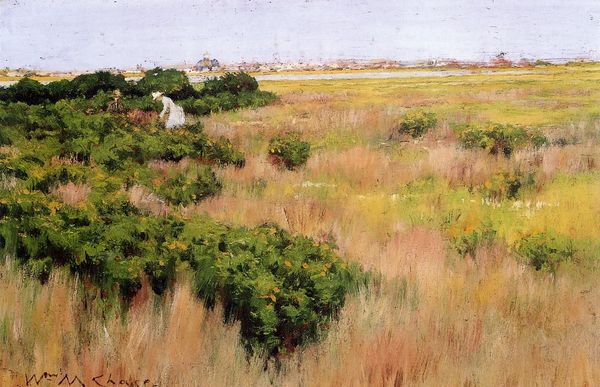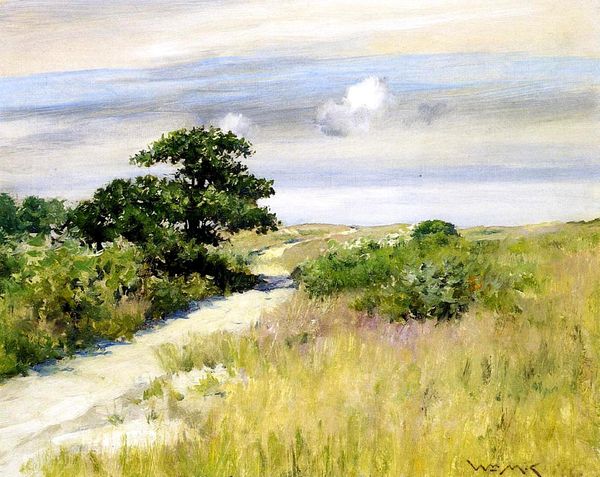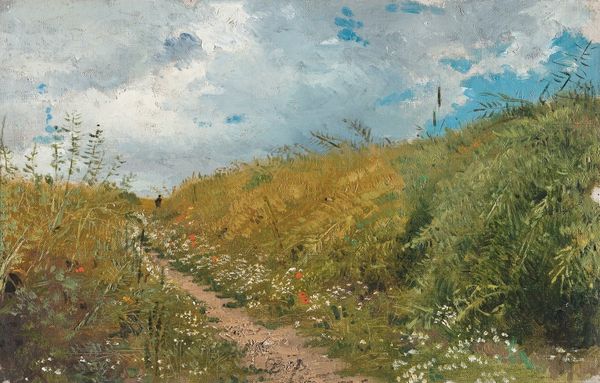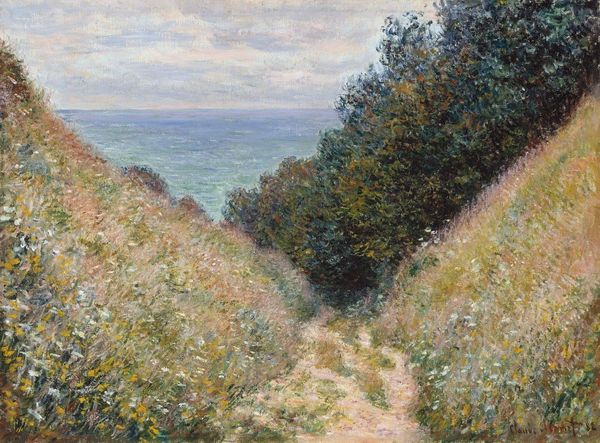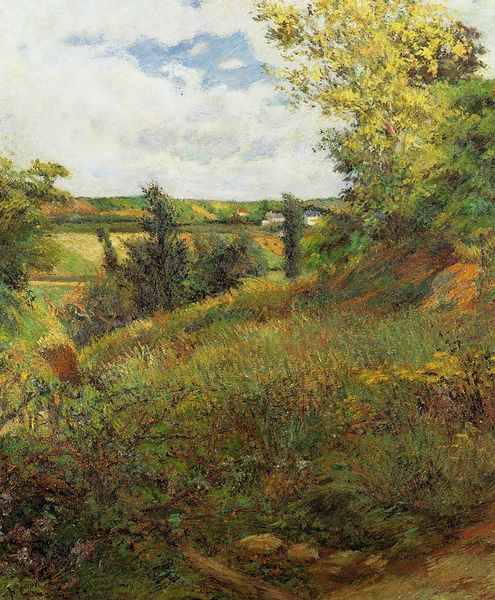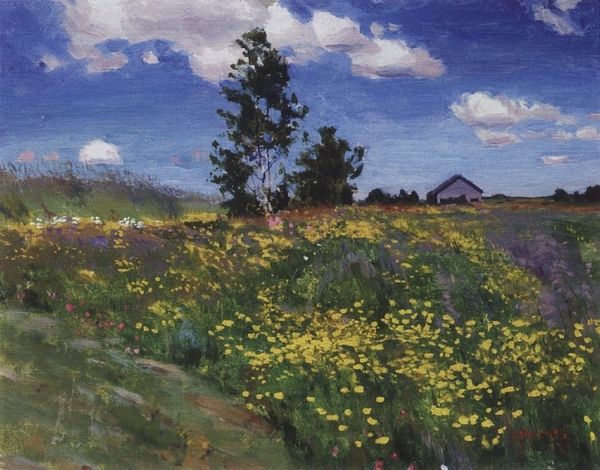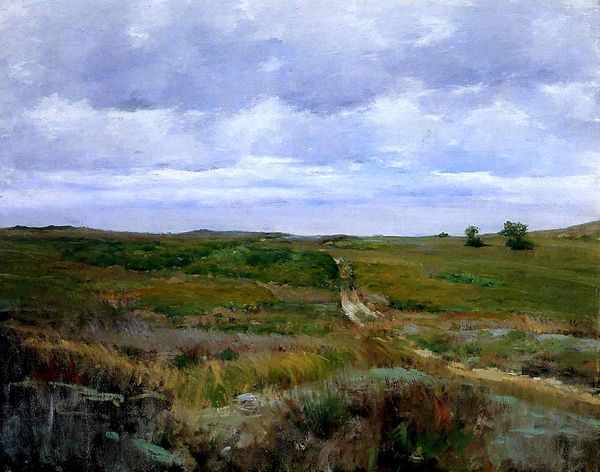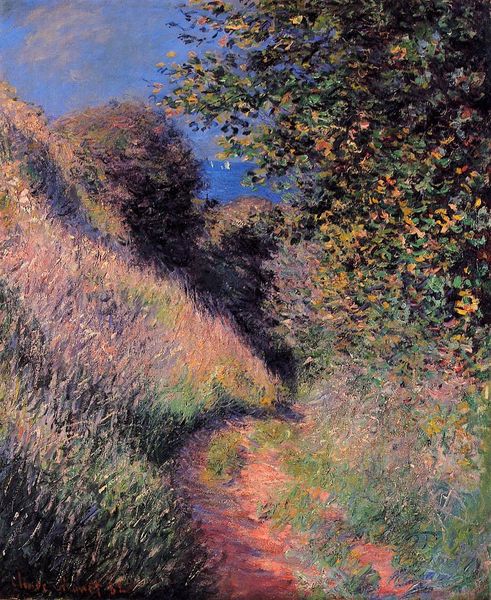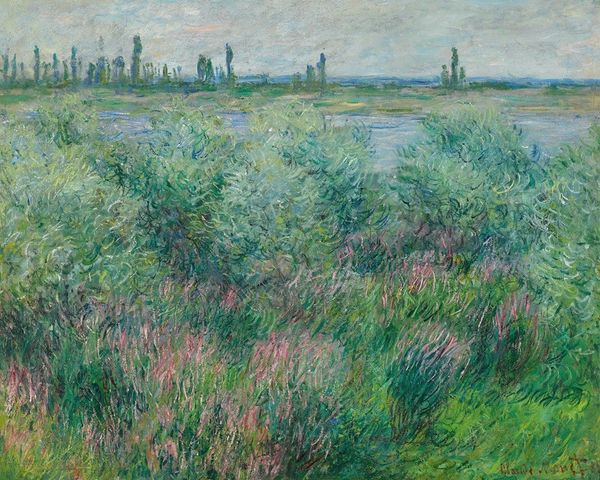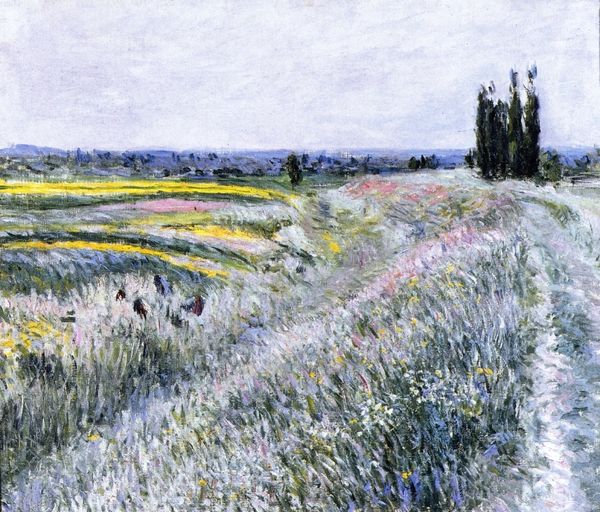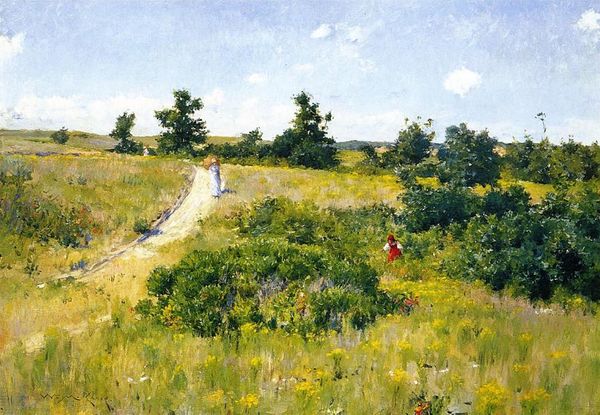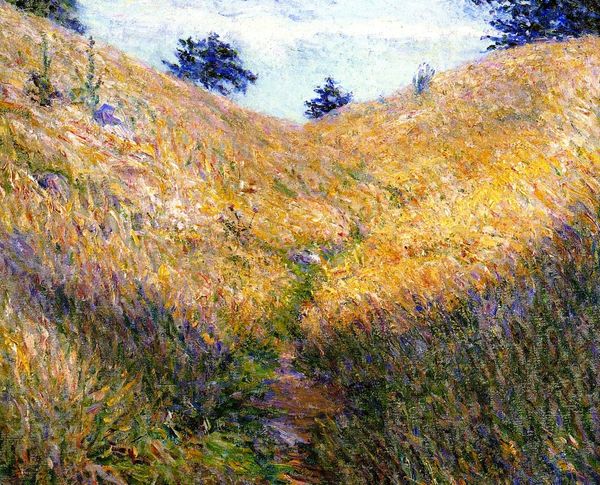
Dimensions: 40.64 x 50.8 cm
Copyright: Public domain
Curator: Before us hangs "Landscape, Shinnecock Hills," painted by William Merritt Chase around 1900. Editor: There’s an undeniable sense of calm to this painting, isn't there? The gentle undulation of the landscape, the muted palette—it all feels very tranquil. Curator: Chase was quite deliberate in his brushwork, particularly in how he captures the texture of the grasses. Notice how the impasto creates a tactile surface. It’s not merely representation; it's almost a performance of the landscape itself. Editor: I wonder how the Shinnecock Hills community, a site of significant Native American presence, factored into Chase’s depiction? His art school attracted wealthy patrons to the area. How did his idyllic landscapes affect or reflect local perceptions and land use politics? Curator: A good point. From a purely formal perspective, the composition leads the eye smoothly from the foreground up the grassy hill, toward the implied horizon. The strategically placed tree, though not central, acts as an anchor, grounding the more ethereal qualities of light and sky. Editor: Certainly, but to ignore the socio-economic context is to miss a key layer. Chase benefitted from, and perhaps contributed to, the image of Long Island as an unspoiled, accessible landscape at a time when wealthy New Yorkers were shaping it. Did he engage with the indigenous history, or did his vision contribute to an erasure? Curator: It’s a visual articulation of leisure. The painting offers a careful balance between realism and abstraction—the essence of the location through a veil of subjective interpretation. Editor: The appeal is undeniable, but viewing art through the prism of history helps to reveal its complexities. Chase's brushstrokes reflect not only his perception but the historical context he occupied. Curator: Indeed. Perhaps we find that analyzing form and context reveals a far richer understanding than considering either in isolation. Editor: It appears so. Let's allow others to consider these intersections as well.
Comments
No comments
Be the first to comment and join the conversation on the ultimate creative platform.

